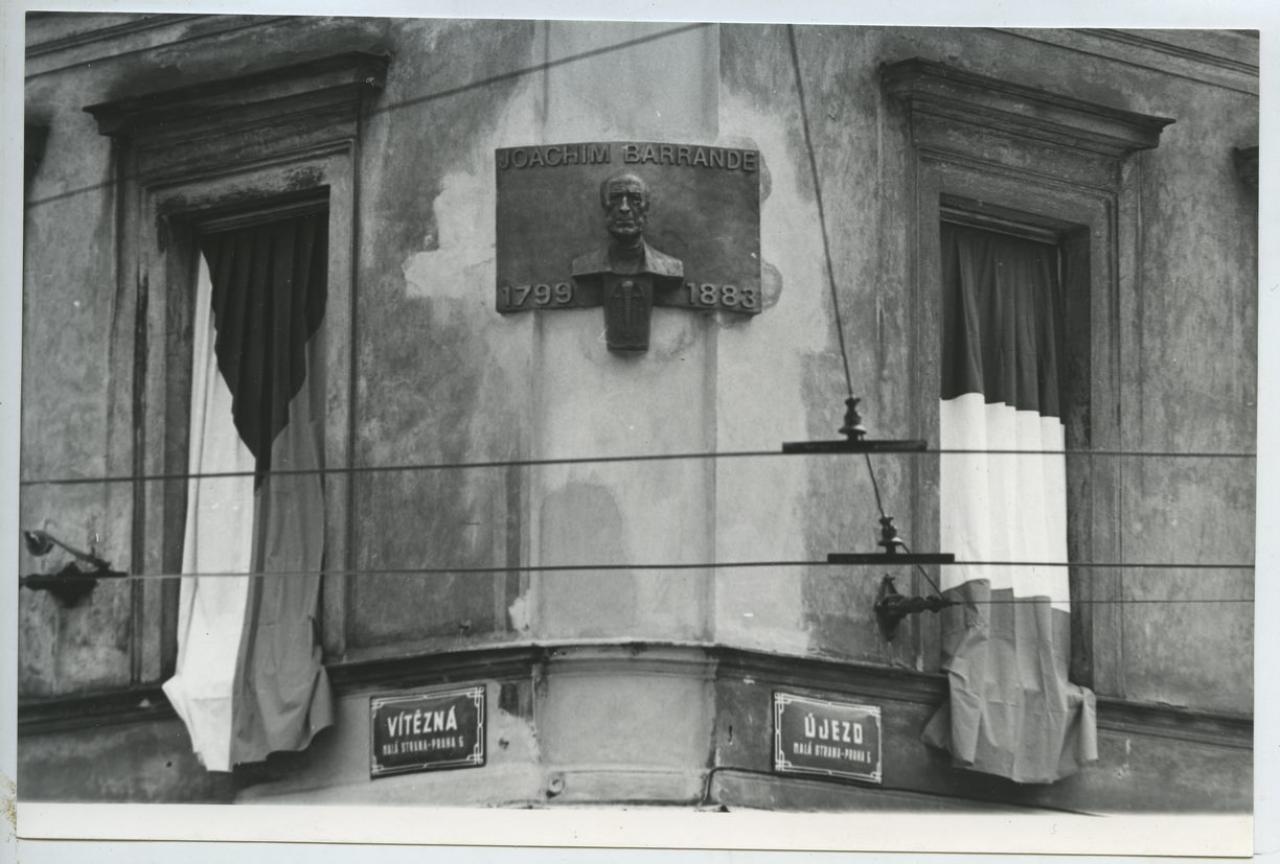Commemorative plaque to Joachim Barrande in Prague at Újezd
Dating: 1969
Annotation:
Joachim Barrande (1799–1883) came to Bohemia in 1833 with the exile court of the French king Charles X. and he spent all his remaining years here. He took up palaeontology and amassed a huge collection of fossils as a private researcher. He categorised the collection in his flat at Újezd in Prague. Here a plaque by K. Lidický was installed in 1969 under the care of the Czechoslovak Academy of Sciences to commemorate Barrande.
Description:
Barrande first lived in Prague at Malostranské Square, later moving to a corner house on the corner of Vítězná St. and Újezd. Here, in a five-room apartment on the third floor, he organized his spectacular paleontological work. Barrande found the first fossils in Zlíchov, which then lied behind the city walls of the Malá Strana. His maid was Jan Neruda`s mother, Barbora. In his short story The Trilobite, Jakub Arbes relates how she rescued the first trilobite Barrande found, when cleaning his rooms she “swept it from under the bed” and how “the symmetric imprint in the stone got her attention for a moment; yet the ordinary stone would hardly have escaped the fate awaiting all such rubbish, had it not occurred to the simple, working-class women that such a piece of rock would perhaps not be in the bedroom under the bed of this quite eccentric Monseigneur by accident...”
Barrande named the fossils in Czech (e.g. Maminka, Tetinka, Panenka, Pantáta – Mom, Auntie, Maid, Gaffer etc.) in protest against the decision of the Scientific Congress in Bologna (1881), which established Latin and Greek (or Latinized) as the only valid scientific names. The decision of the Congress was eventually reversed, and perhaps Barrande contributed to it with this “jibe”, thus showing himself in a slightly more interesting light than just a boring, lonely and scrupulous engineer.
After Barrande`s death, the collection remained in the house at Újezd for several more years until the new building of the National Museum was completed (1891). The credit for organizing the collection and completing Barrande`s posthumous work goes mainly to Professor Antonín Frič. The whole of Barrande`s collection is estimated to contain hundreds of thousands of objects and it is part of the palaeontological exposition of the National Museum.
Connected places:
Memorial to Joachim Barrande in Skryje (Museum)
Commemorative Plaque to J. Barrande on Barrande Rock in Prague
Monument to J. Barrande in Skryje and Educational Nature Trail In the Footsteps of the Trilobite
Joachime BarrandePamátník Joachima Barranda ve Skryjích (muzeum); Pamětní deska Joachima Barranda na Barrandově skále v Praze; Pomník Joachima Barranda ve Skryjích a naučná stezka Po stopě trilobita; Národní přírodní památka Klonk - mezinárodní stratigrafické rozhraní silur - devon
Keywords: history of natural sciences; paleontology
References:
Horný, R., Turek, V.: Joachim Barrande (1799–1893), Život, dílo a odkaz světové paleontologii. Národní muzeum, přírodovědecké muzeum, Praha 1999, 56 pp.
Marek, J., Šarič, R., Kácha, P.: Joachim Barrande, Říkali mu jemnostpán – People called him gentle man, Česká geologická služba, Praha 2013, 66 pp.
Kříž, J.: Joachim Barrande. Český geologický ústav, Praha 1999.
Svoboda, J.; Prantl, F.: Barrandien. Geologie středočeského siluru a devonu v obrazech. ČSAV Praha 1958, s. 33─54.
Chlupáč, I. (eds.): Paleozoikum Barrandienu. Český geologický ústav, Praha 1992.
Author's initials: MZ
Photos:

Commemorative plaque to J. Barrande on the corner of Vítězná Street and Újezd (Author: National Museum)

Ceremonial unveiling of the commemorative plaque during international geological congress. One of the speeches was made by French geologist Pierre Bout. (Author: National Museum)


